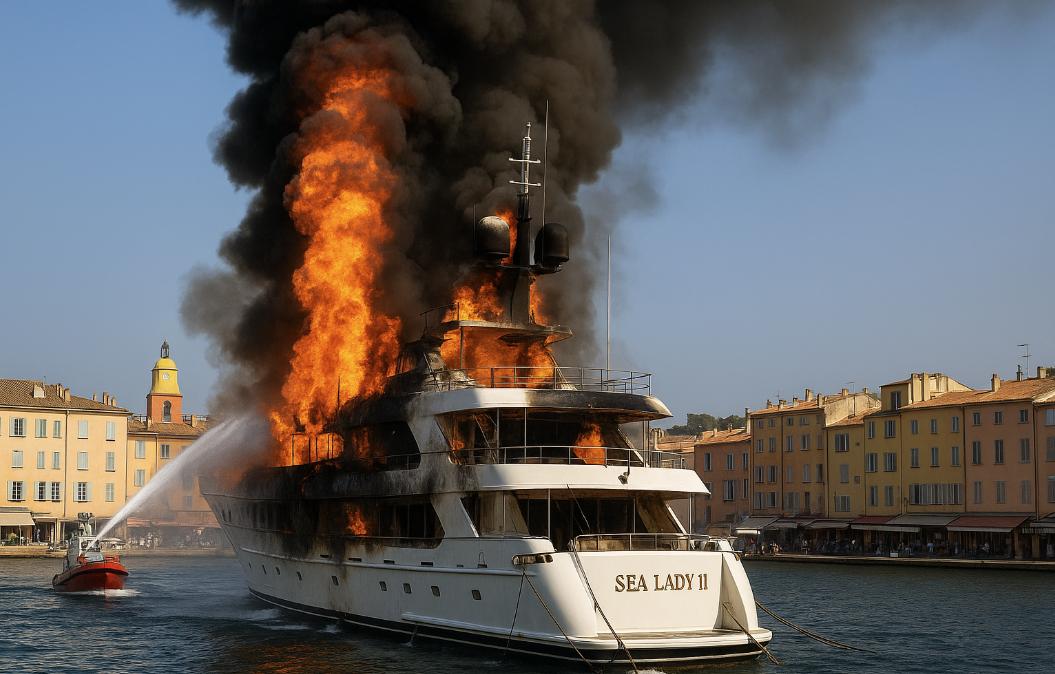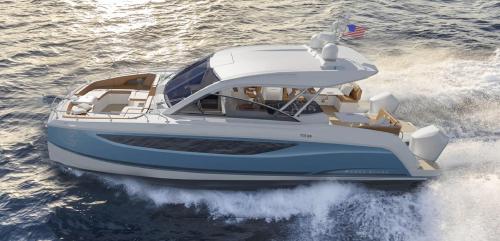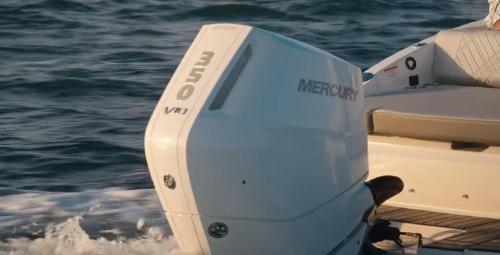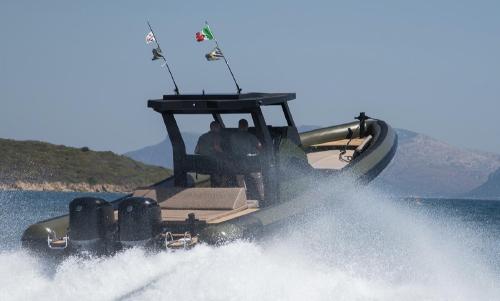The summer heat in Saint-Tropez was pierced by sirens and a growing column of black smoke on the evening of July 10, 2025, as a devastating fire broke out aboard the 41.58-metre superyacht Sea Lady II. Moored at the iconic Vieux Port in the heart of the French Riviera’s most glamorous marina, the vessel rapidly became the scene of a dramatic firefighting operation that captured the attention of bystanders, yacht crews, and media outlets across Europe.
A Luxury Yacht with a Rich History
Built in 1986 by the renowned UK shipyard W.A. Souter & Sons, Sea Lady II—originally named D’Angleterre II—has long stood as a testament to classic British yacht craftsmanship. The yacht underwent a substantial refit in 2024, modernizing its interiors and equipment to meet the expectations of today’s luxury charter market. Registered under the Maltese flag, Sea Lady II has been a regular presence in Mediterranean waters and a favorite among charter clients in the Côte d’Azur.
Her elegant lines and generous deck space made her an attractive option for summer rentals, with prices reportedly ranging from €80,000 to €100,000 per week (approximately $87,000 to $109,000 USD or $115,000 to $144,000 CAD) during peak season.
Disclaimer: Charter rates and values are approximate and may vary depending on season, services included, and market conditions.
The Fire: What We Know
According to reports from SuperYachtNews and People, the fire began around 8:00 p.m. local time in the forward section of the yacht. Within minutes, thick smoke and visible flames engulfed much of the upper and lower decks. Nearby boats were quickly evacuated as firefighters mobilized both on land and via marine units.
Two crew members, aged 24 and 35, were rescued and treated for smoke inhalation at a local hospital. Fortunately, there were no fatalities or serious injuries reported.
Roughly 60 firefighters, along with two fireboats, were deployed to combat the blaze. Containment was achieved by midnight, though firefighting efforts continued into the early morning hours to address hotspots and cool the hull. Fire crews laid anti-pollution booms around the vessel to prevent diesel leakage into the harbor. Local authorities estimate that Sea Lady II carried up to 27,000 liters of diesel fuel—a serious environmental threat had the fuel tanks ruptured during the fire.
Damage and Aftermath
The yacht suffered extensive structural damage, and by the morning of July 11, the vessel began taking on water. Authorities closed Port de Saint-Tropez to inbound and outbound boat traffic, citing concerns that the burned hull could collapse or sink at its berth. Salvage experts are currently assessing options for refloating or dismantling the wreck.
Preliminary estimates suggest a total loss of the vessel, which was insured. The cause of the fire is under investigation, with early indications pointing to either an electrical fault or galley malfunction, though arson has not been entirely ruled out.
Environmental Concerns
In addition to the danger posed to nearby boats and people, the incident underscores the environmental risks associated with superyachts. Had the vessel sunk fully loaded with fuel and oils, the contamination could have devastated marine life in the shallow waters of the port.
The French maritime prefecture issued a statement praising the swift response of local emergency services, noting that early deployment of booms and coordinated firefighting kept the situation from escalating further. However, with Sea Lady II still partly submerged and charred from bow to stern, cleanup and recovery efforts are expected to continue for several days, if not weeks.
A Wake-Up Call for Yacht Owners
This high-profile incident comes during the peak Mediterranean yachting season and has raised questions about fire safety on large yachts, particularly those built decades ago and modernized only recently. While the 2024 refit included updated electronics and navigation systems, the original superstructure and internal cabling may have remained susceptible to fire hazards.
Experts are now calling for more rigorous fire inspections and updated safety certifications for vessels over 30 years old. Yacht insurers may also begin demanding thermal imaging inspections or redundant fire suppression systems for vessels operating in high-traffic ports like Saint-Tropez, Monaco, and Portofino.
The Broader Impact on the Saint-Tropez Yachting Scene
With Saint-Tropez drawing dozens of superyachts each week during the summer, any disruption to port traffic is significant. The temporary port closure has forced charter yachts and visiting vessels to reroute to nearby marinas in Cogolin, Sainte-Maxime, and Port Grimaud, putting strain on their infrastructure.
Luxury charter firms, meanwhile, are bracing for cancellations or reassignment requests from concerned clients. Although incidents like the Sea Lady II fire are rare, they reinforce the importance of proper safety planning, regular crew drills, and robust emergency protocols.
Conclusion: Lessons from the Blaze
The fire aboard Sea Lady II is a stark reminder that even the most beautiful and well-maintained yachts are not immune to catastrophe. Whether due to human error, aging infrastructure, or pure chance, fire at sea—or even in port—remains one of the most dangerous scenarios a vessel can face.
As the luxury yachting world looks on, Saint-Tropez begins the task of recovery. Investigators will continue to search for the exact cause, insurers will tally up claims, and crews across the region will double-check fire systems aboard their vessels.
But one thing is certain: the haunting image of a burning superyacht in the heart of the French Riviera will linger in the minds of captains, owners, and tourists for some time to come.
Have thoughts on fire safety aboard yachts or experiences in Saint-Tropez? Join the conversation on Facebook or tag us on Instagram @vesselstar.




Use the share button below if you liked it.